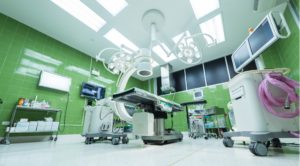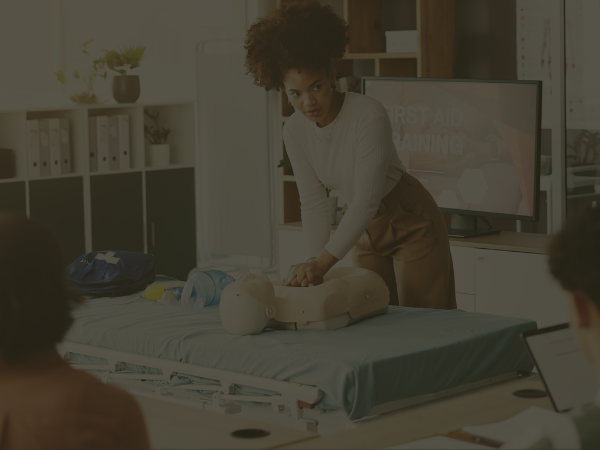Your cart is currently empty!
10 Steps to Preventing Spread of Infection in Hospitals
HOSPITAL-ACQUIRED INFECTIONS (HAIs) are a major burden on health care costs in the U.S. Per the National Library of Medicine, at least one in 25 patients in U.S. hospitals is dealing with an HAI on any given day. HAIs are more than just added costs; they can cause irreparable bodily harm, drive the costs of health care up and even result in death. Fortunately, you can help reduce the spread of infection in your facility by following these steps, reports the World Health Organization (WHO).
 1. Wash Your Hands.
1. Wash Your Hands.
Hand washing should be the cornerstone of reducing HAIs. Wash hands with warm soap and water vigorously for at least 20 seconds. Also, all staff members and people in the facility should be encouraged to wash their hands before drinking, eating, providing care and between caring for patients.
2. Create an Infection-Control Policy.
The infection control policy details what patients have the highest risks for contracting or passing along HAIs. The policy should include information on when patients should be placed on isolation precautions or otherwise preventing contact with other patients and staff.
Hand washing should be the cornerstone of reducing HAIs.
3. Identify Contagions ASAP.
Highly contagious infections, such as clostridium difficile (c. diff), should be identified as early as possible. For example, any patient admitted with diarrhea should be immediately tested for c. diff. Similarly, people with respiratory issues should be tested for the flu.
4. Provide Infection Control Education.
Staff members need to know how to identify common infections and help prevent their spread. Consequently, your organization should provide continued, recurring education on infection control. This includes training on bloodborne pathogen and droplet-borne infections.
5. Use Gloves.
Health care professionals may not always wear gloves when interacting with patients. But, if any contact with blood or bodily fluids is possible, such as when changing sheets or emptying trash, gloves should be worn.
6. Provide Isolation-Appropriate Personal Protective Equipment.
Isolation-appropriate protective equipment includes waterproof gowns, gloves, shoe covers, face shields and masks. If patients have a contagious illness, appropriate isolation equipment should be readily available for use.
7. Disinfect and Keep Surfaces Clean.
Between patients, every room in a facility should be cleaned thoroughly with a bleach-containing cleanser. This helps to prevent accidental transmission of infections as new patients are admitted. Furthermore, non-patient areas, such as the breakroom and nurses’ station should be cleaned daily.
8. Prevent Patients From Walking Barefoot.
No one really wants to wear shoes when ill, but all patients should be encouraged to wear slippers or non-slip socks when walking in the hospital, including in their patient rooms. Although this seems extreme, nurses and other persons entering individual rooms can carry pathogens into the room from other areas and patient rooms.
9. Change Linens When Daily and When Dirty.
Linens should be properly sanitized and cleaned in laundry, but they should not be left on patient’s beds for extended periods. Linens should be changed daily and whenever visibly dirty. Furthermore, linens that fall on the floor should immediately be sent back to laundry for cleaning.
10. Make Sure Foods Are Kept at Proper Temperatures.
Most hospitals and health care facilities have refrigerators for patient snacks on individual units. The temperature such equipment should be checked every shift for food safety reasons. Furthermore, patients should be encouraged to eat their meals when they arrive. If food stays out in a patient’s room for several hours, it should be trashed to prevent spoilage and the possibility of acquiring an infection.
Act to STOP Infection Spreading Now.
Infections are dangerous and deadly. Even minor infections can become major problems for patients with healing problems, such as diabetes. Start following these steps today, and help your team stop the spread of infection before it begins.
23 responses
-
-
Thank you for the kind comment!
-
-
informative,thsese steps can not only save patient life but also reduces economic burden of the treatment in the hospital
-
True. Thank you for the kind feedback!
-
-
Wow great for your elaboration
-
Thanks for reading! Glad you like it.
-
-
Being a nursing students it is very important to us thanks
-
It’s true. Thank you for the feedback!
-
-
Information helpeful
-
Thank you Barnabas, we are glad you think so!
-
-
Thanx very much I have learned alot and they are now helping me during my studies and my procedures
-
It is our pleasure! We are happy to help!
-
thank you so much
-
-
-
This was very helpful, thank you so much!!!! Have a lovely day
-
Thank you! We are glad you enjoyed it!
-
-
I didn’t realize that even food temperature is a consideration to keep health care facilities infection-free and they use refrigerators to address this. I also wonder how hospitals go about their disinfection process. It would be nice to get to know the technology used to keep these places safe.
-
Thanks for your comment and interest in our article!
-
-
Woow I have just used this to solve my project, being a nursing student this was very impactful, thanks alot
-
Hi, Gladys. Thank you for sharing that with us! We are glad it was helpful.
-
-
Thanks i really appreciate this, it’s helpful.
-
You are welcome, Queen!
-
-
Thank you for this helpful information😻👏👏
-
You’re welcome! We are glad you found the information helpful. If you have any more questions or need further assistance, feel free to ask. 😊👍
-









Very helpful information. I have learnt a lot. Thank you